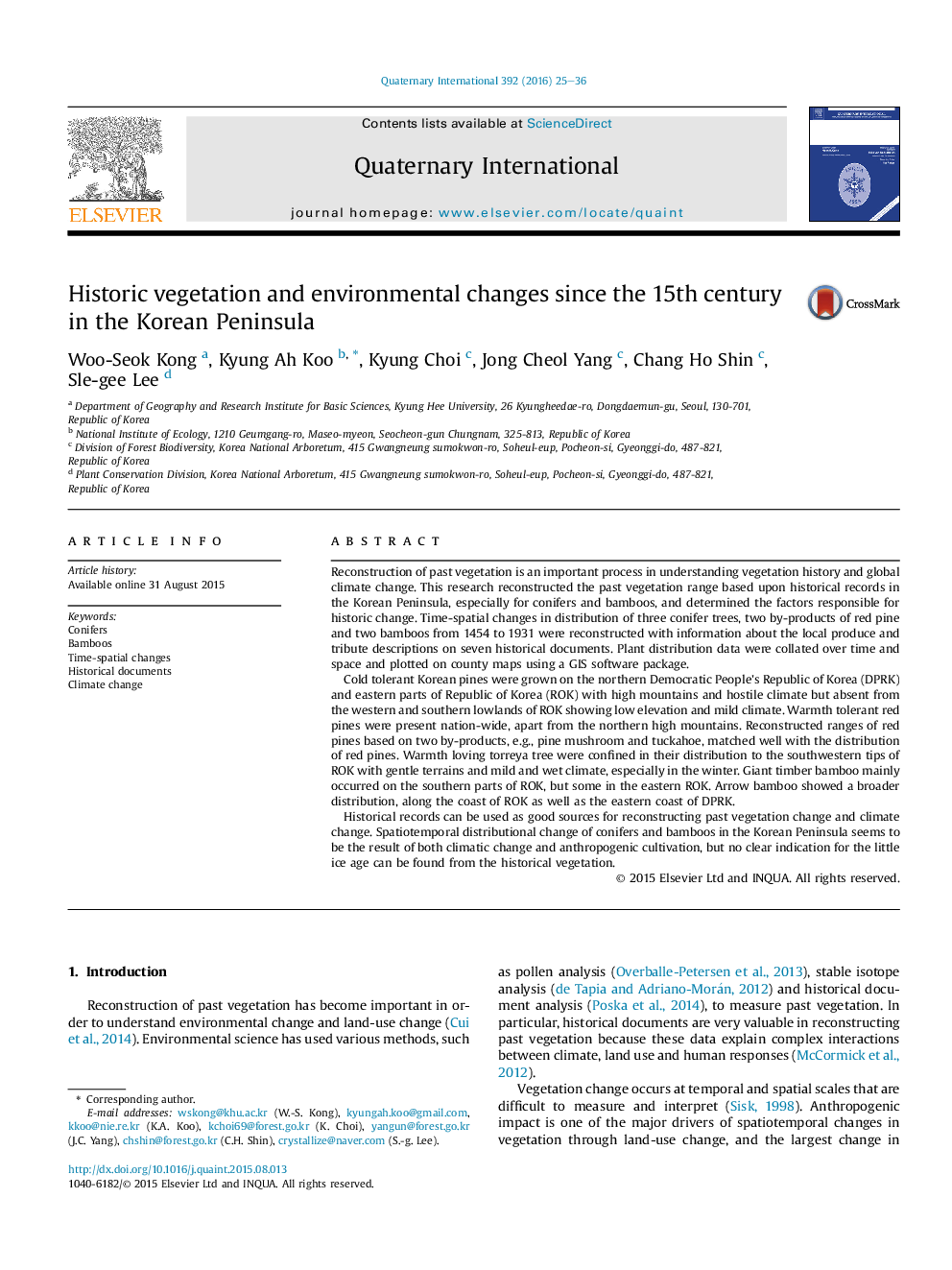| کد مقاله | کد نشریه | سال انتشار | مقاله انگلیسی | نسخه تمام متن |
|---|---|---|---|---|
| 1040383 | 1484106 | 2016 | 12 صفحه PDF | دانلود رایگان |
Reconstruction of past vegetation is an important process in understanding vegetation history and global climate change. This research reconstructed the past vegetation range based upon historical records in the Korean Peninsula, especially for conifers and bamboos, and determined the factors responsible for historic change. Time-spatial changes in distribution of three conifer trees, two by-products of red pine and two bamboos from 1454 to 1931 were reconstructed with information about the local produce and tribute descriptions on seven historical documents. Plant distribution data were collated over time and space and plotted on county maps using a GIS software package.Cold tolerant Korean pines were grown on the northern Democratic People's Republic of Korea (DPRK) and eastern parts of Republic of Korea (ROK) with high mountains and hostile climate but absent from the western and southern lowlands of ROK showing low elevation and mild climate. Warmth tolerant red pines were present nation-wide, apart from the northern high mountains. Reconstructed ranges of red pines based on two by-products, e.g., pine mushroom and tuckahoe, matched well with the distribution of red pines. Warmth loving torreya tree were confined in their distribution to the southwestern tips of ROK with gentle terrains and mild and wet climate, especially in the winter. Giant timber bamboo mainly occurred on the southern parts of ROK, but some in the eastern ROK. Arrow bamboo showed a broader distribution, along the coast of ROK as well as the eastern coast of DPRK.Historical records can be used as good sources for reconstructing past vegetation change and climate change. Spatiotemporal distributional change of conifers and bamboos in the Korean Peninsula seems to be the result of both climatic change and anthropogenic cultivation, but no clear indication for the little ice age can be found from the historical vegetation.
Journal: Quaternary International - Volume 392, 21 January 2016, Pages 25–36
